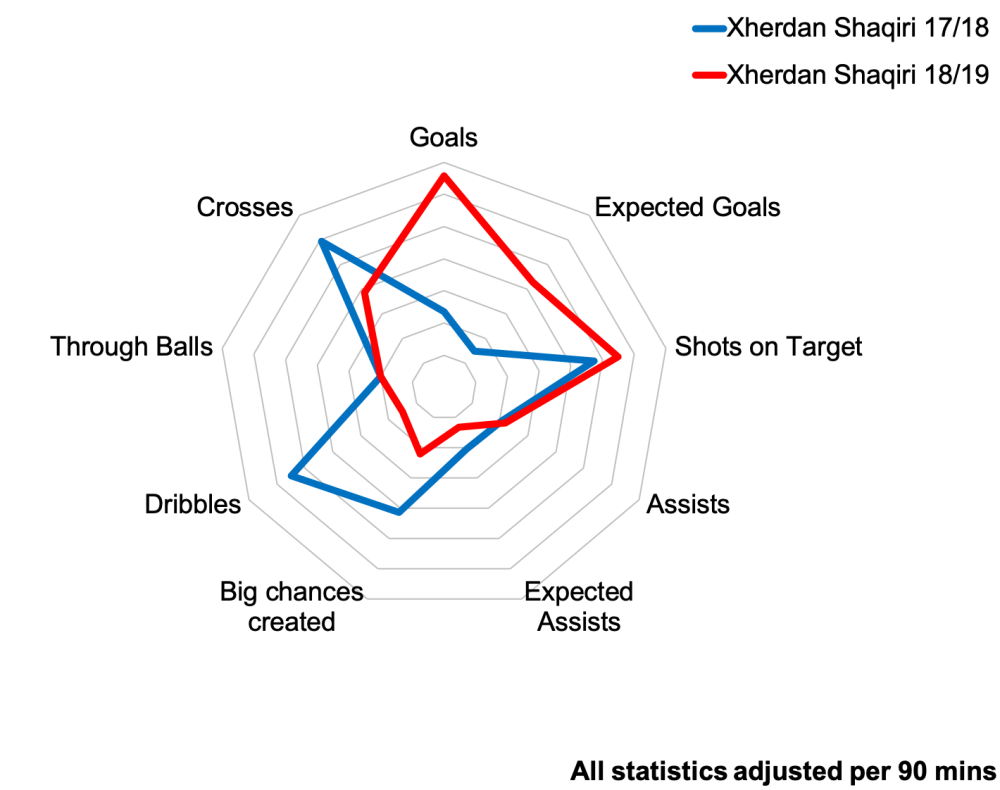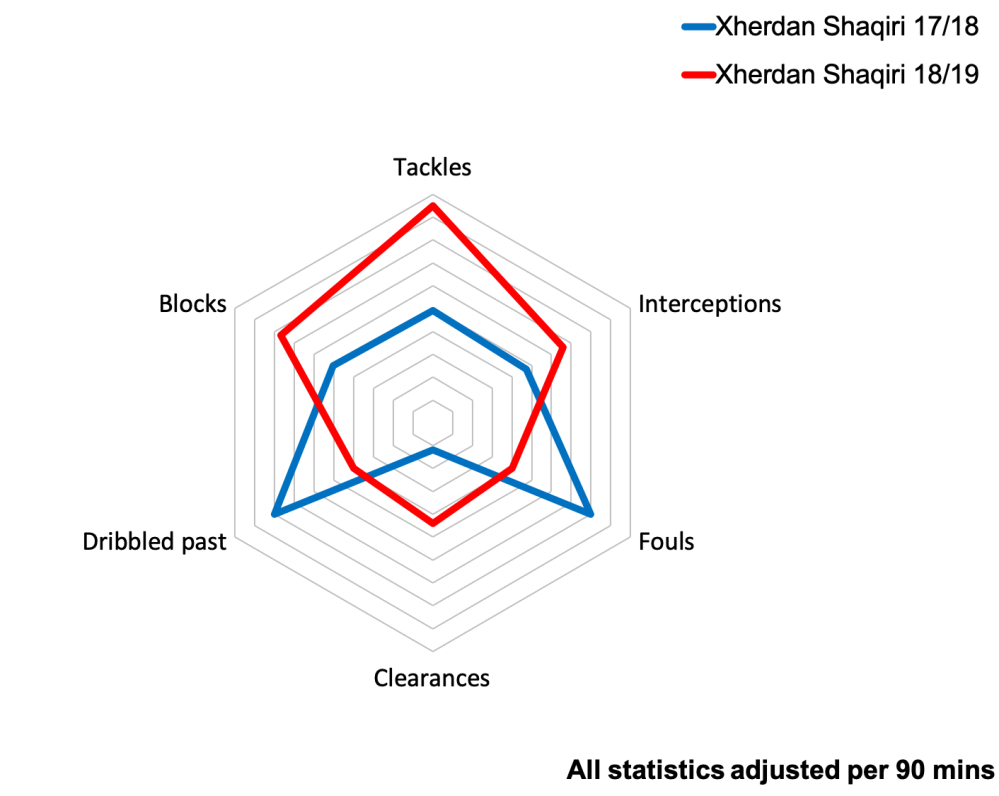Having now completed the small matter of writing a PhD thesis, I thought that the best way to start the new year would be to return to blog writing. To mirror my own new-found energy, I wanted to focus on one particular player who has discovered a new lease of life on the pitch in recent months – Xherdan Shaqiri. Eyebrows were initially raised when Shaqiri made the move to Liverpool in the summer, with a somewhat ambivalent response to the Swiss’s arrival compared with Liverpool’s recent big money signings. However, with the departure of Phillipe Coutinho in January, it was clear that Liverpool were on the lookout for someone with more midfield creativity who could regularly feed the prolific front three – no need to remind ourselves of Nabil Fekir debacle.
Whilst he doesn’t quite fulfil the role of a typical number 10, Shaqiri has been a revelation on Merseyside so far and is looking an absolute bargain in today’s astronomical transfer fees, priced at a lowly £13 million. Shaq has been in and out of the team this season but when he has played, he has taking up a role on the right of a new 4-2-3-1 system, as you can see below by his average heatmap for the reds. This was an explicit tactical change from Jürgen Klopp in an effort to get four attacking players on the pitch to break down the low block which many ‘lesser’ teams set-up with against Liverpool. Indeed, whether it is playing from the start or coming off the bench, the Swiss’s return of 6 goals and 2 assists so far has already shown that he is making a good impact when he gets on the pitch. Of course, the different styles of play between a relegated Stoke City and title-chasing Liverpool are worlds apart, but have Shaqiri’s individual stats improved this campaign compared to last?

Image courtesy of Football Whispers
As shown below, Shaqiri’s goals output per 90 mins is looking very impressive this season (0.67 goals per 90), more than double his return from last season (0.24 goals per 90). More interesting, however, is his improved Expected Goals (xG) tally which has soared from 0.15 to 0.43 xG per 90. This is likely to reflect the better positions that Shaq is allowing himself to get into at Liverpool, which shows a greater trust in his teammates to find him in dangerous positions – as opposed to the responsibility of being chief playmaker at Stoke City last season. Indeed, the reduced number of crosses, through balls, and dribbles from Shaqiri compared with last season suggests that he is not having to ‘force the issue’ as much in attack at Liverpool, knowing that he has quality players around him to link up with. Together, it suggests that his role has evolved from last season, with less pressure to be the creator of chances, which has allowed him to become more of a goal threat himself under Klopp this season.

Whilst the obvious focus is on Shaqiri’s attacking output, it is worth taking a glimpse at his how his defensive work has changed since moving to Liverpool. As shown by the radar below, it seems that the Swiss international is far more ‘up for the fight’ when out of possession under Klopp, making twice as many tackles this season compared to last (1.43 vs 0.74 per 90). Indeed, Shaqiri is making more interceptions (0.66 vs. 0.47), clearances (0.44 vs. 0.12), and blocks (0.77 vs. 0.50) per 90 minutes for his new employers, with a particularly interesting statistic showing that he is ‘dribbled past’ half the number of times compared with last season (0.40 vs. 0.80 per 90). This appears to be indicative of his improved fitness and desire this year, which is no real surprise given the high work rate that the Jürgen Klopp demands from all of his players. Indeed, Shaqiri wouldn’t get near the starting XI if he were not willing to put in a shift for his team – something which was not necessarily the case at Stoke last season.

NB. With access to more data, the above figure would also have been possession-adjusted but is currently adjusted per 90 mins only.
A small note of consideration with Shaqiri’s statistics this season is that the Swiss has largely been utilised against teams lower in the table, with Jürgen Klopp often reverting back to his trusted 4-3-3 formation against the Top 6 teams (Arsenal home game aside). Whether or not Shaqiri can prove that he is trustworthy in the bigger games remains to be seen, but if nothing else he is showing to be a useful weapon against teams who often play a lower defensive block against Liverpool. Indeed, it is these teams which the Reds have historically struggled against, dropping silly points all too often which has cost them a credible title challenge.
Few people questioned Shaqiri’s inherent quality prior to his move to Anfield, yet his impact on the pitch this season has been greater than many would have expected. With his improved statistics in front of goal and increased work rate off the ball, it seems we are now seeing more disciplined, mature performances from Shaqiri, who is proving to be a valuable addition to Liverpool’s squad in their title push. It is also clear that the recruitment and scouting department at Liverpool is on top of its game, with sporting director Michael Edwards gaining a lot of praise for his shrewd work off the pitch for the Reds. On top of that, Jurgen Klopp has an unrelenting knack for improving players and adapting their positions to get the best out of them, which appears to have struck again this season with Shaqiri. At 27 years of age, Liverpool may just be getting Swiss powerhouse at the peak of his powers.